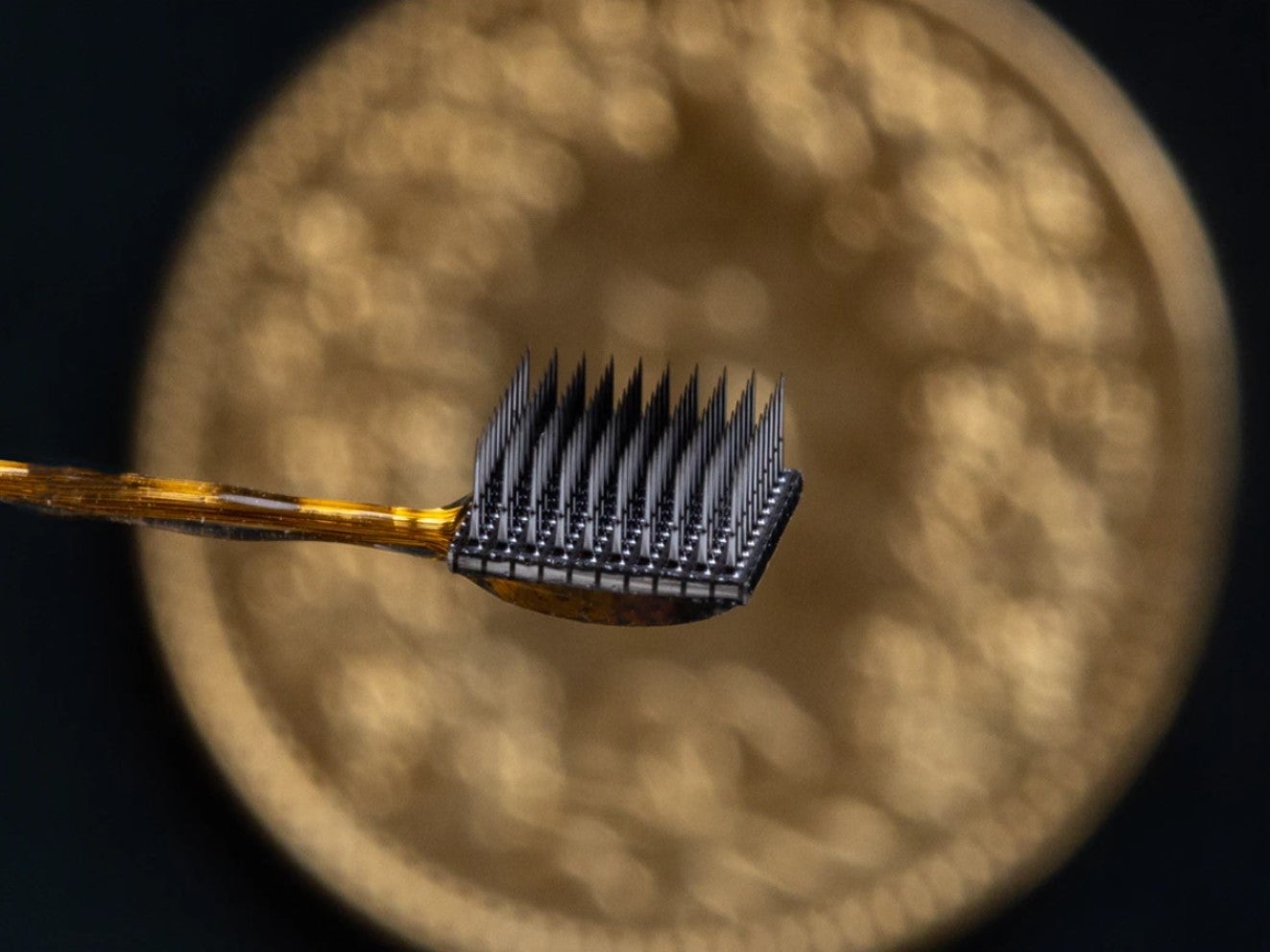Brain chip lets locked-in man communicate with his thoughts
It is the first time someone who has no remaining voluntary muscle movement has been able to communicate, researchers say

A completely paralysed person unable to speak or move their eyes has been able to communicate using a breakthrough brain-computer interface (BCI).
The 34-year-old male patient was fitted with the device after being left in a locked-in state through amyotrophic lateral sclerosis (ALS) – a progressive neurodegenerative disease in which people lose the ability to move and talk.
Communications devices for ALS sufferers currently rely on eye movements or facial muscles, most famously seen through Stephen Hawking’s system, however the new technology demonstrates that verbal communication may be possible for patients who no longer have any voluntary muscular control.
Researchers at the Wyss Center for Bio and Neuroengineering in Geneva, Switzerland, surgically implanted the two intracortical microelectrode arrays in the patient’s motor cortex in order to read the brain signals typically used to communicate.
Over a period of two years, the patient learned how to generate brain activity that could be decoded by a machine learning model in real-time, allowing them to answer either ‘yes’ or ‘no’ simply by thinking.
When presented with a speller program that reads the letters of the alphabet aloud, the patient was able to form entire sentences.
“Successful communication has previously been demonstrated with BCIs in individuals with paralysis, but, to our knowledge, ours is the first study to achieve communication by someone who has no remaining voluntary movement and hence for whom the BCI is now the sole means of communication,” said Dr Jonas Zimmermann, a senior neuroscientist at the Wyss Center.
“This study answers a long-standing question about whether people with complete locked-in syndrome – who have lost all voluntary muscle control, including movement of the eyes or mouth – also lose the ability of their brain to generate commands for communication.”
Trials of the technology were able to take place mostly at the patient’s home, where he lives with his family.
“This is an important step for people living with ALS who are being cared for outside the hospital environment,” said George Kouvas, chief technology officer at the Wyss Center.
“This technology, benefiting a patient and his family in their own environment, is a great example of how technological advances in the BCI field can be translated to create direct impact.”
Further research into the longevity, safety and efficacy of the BCI is required before it can be used more widely, though the researchers are hopeful it can be developed to help other people with impaired ability to communicate and move.
The study, titled ‘Spelling interface using intracortical signals in a completely locked-in patient enabled viaauditory neurofeedback training’, was published today in the journal Nature Communications.

Join our commenting forum
Join thought-provoking conversations, follow other Independent readers and see their replies
Comments